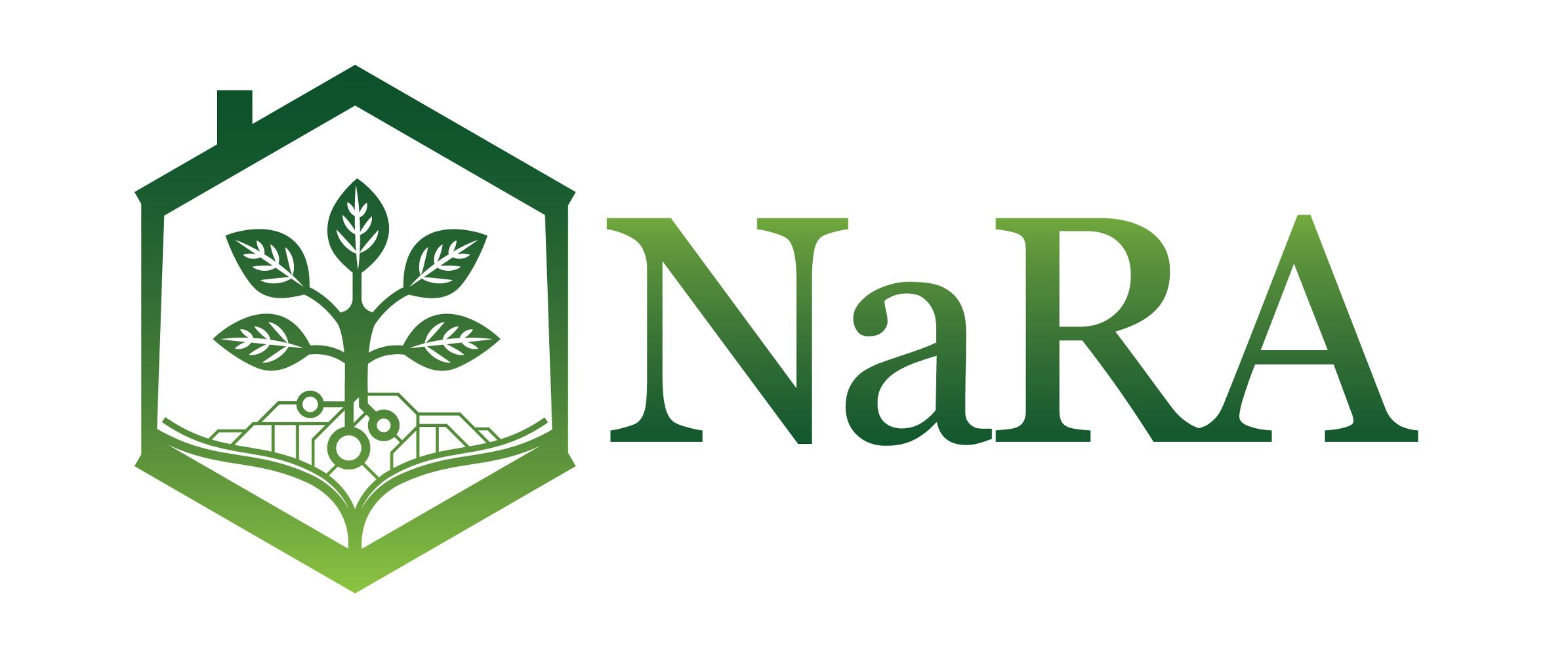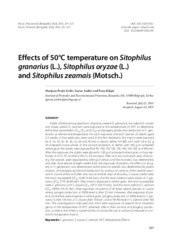Effects of 50°C temperature on Sitophilus granarius (L.), Sitophilus oryzae (L.) and Sitophilus zeamais (Motsch.)
Efekti temperature 50°C na Sitophilus granarius (L.), Sitophilus oryzae (L.) i Sitophilus zeamais (Motsch.)
| dc.contributor.author | Prazic Golic, Marijana | |
| dc.contributor.author | Andric, Goran | |
| dc.contributor.author | Kljajic, Petar | |
| dc.date.accessioned | 2015-11-07T15:26:44Z | |
| dc.date.available | 2015-11-07T15:26:44Z | |
| dc.identifier.uri | http://arhiva.nara.ac.rs/handle/123456789/1398 | |
| dc.description.abstract | Adults of laboratory populations of granary weevil (S. granarius), rice weevil (S. oryzae) and maize weevil (S. zeamais) were exposed at the temperature of 50°C to determine lethal time (parameters LT20, LT50 and LT99) and progeny production/reduction in F1 generation at mentioned temperature. For each exposure and each species 25 adults aged 2-5 weeks, in four replicates, were used. In the first treatment, the insects were exposed for 6, 10, 14, 16, 18, 20, 22, 26 and 30 min in plastic dishes (V=200 cm3) with 1.8 ± 0.2 g of untreated coarse wheat. In the second treatment, in dishes with 100 g of untreated wheat grain the adults were exposed for 90, 100, 110, 120, 130, 140, 150, 165 and 180 min. After the exposure, the adults were placed in 100 g of untreated wheat grain, in four replicates, at 25 ± 1ºC and 60 ± 5% r.h., for recovery. After one, two and seven days of recovery, the weevils were separated by sifting of wheat, and the mortality was determined, and after total period of eight weeks from the exposure of parents, the effect on progeny in F1 generation was determined. Lethal time for weevils was determined by probit analysis, and progeny production/reduction by analysis of variance. After weevils exposure in coarse wheat and after one, two and seven days of recovery, S. oryzae adults were the most susceptible (LT50 12.48-13.68 min), and the most tolerant were adults of S. granarius (LT50 17.79-20.89 min). After insects exposure in wheat grain, the most susceptible were S. granarius and S. oryzae (LT50 107.11-120.73 min), and the most tolerant S. zeamais (LT50 139.90-155.35 min). After exposure of parents of all three weevil species, in coarse wheat, progeny reduction at 100% level is after 22 min. However, after exposure of parents of all three weevil species in wheat grain, progeny reduction at 100% level in S. granarius is after 130 min, in S. oryzae after 150 min, and at 99.7% level in S. zeamais after 180 min. The investigations indicated that short-term exposure of weevils from Sitophilus genus at the temperature of 50°C adversely affects their survival and progeny production, as well as that there is a potential for its successful use as a physical measure in control of storage pest insects. | en |
| dc.description.abstract | Da bi se utvrdilo letalno vreme (parametri LT20, LT50 i LT99) na 50°C i produkcija/redukcija potomstva u F1 generaciji, adulti laboratorijskih populacija žitnog (S. granarius), pirinčanog (S. oryzae) i kukuruznog žiška (S. zeamais) su izlagani pomenutoj temperaturi. Za svaku ekspoziciju i svaku vrstu je korišćeno po 25 adulta starosti 2-5 nedelja, u četiri ponavljanja. Insekti su u prvoj varijanti, u plastičnim posudama (V=200 cm3) sa 1,8 ± 0,2 g krupno mlevene netretirane pšenice izlagani 6, 10, 14, 16, 18, 20, 22, 26 i 30 min. U drugoj varijanti, u posudama sa 100 g netretirane pšenice u zrnu adulti su izlagani 90, 100, 110, 120, 130, 140, 150, 165 i 180 min. Nakon navedenih ekspozicija adulti su stavljani na oporavak u 100g netretirane pšenice u zrnu, u četiri ponavljanja, na 25±1ºC i 60±5% r.v.v. Posle jedan, dva i sedam dana oporavka, prosejavanjem pšenice su izdvojeni žižci i utvrđena je smrtnost da bi, posle ukupno osam nedelja od izlaganja roditelja bio utvrđivan uticaj na potomstvo u F1 generaciji. Letalno vreme žižaka je određeno probit analizom, a produkcija/redukcija potomstva analizom varijanse. Izlaganjem žižaka krupno mlevenoj pšenici, a posle oporavka jedan, dva i sedam dana, najosetljiviji su adulti S. oryzae (LT50 12,48-13,68 min), a najtolerantniji adulti S. granarius (LT50 17,79-20,89 min). Nakon izlaganja insekata u pšenici u zrnu najosetljiviji su S. granarius i S. oryzae (LT50 107,11-120,73 min), a najtolerantniji S. zeamais (LT50 139,90-155,35 min). Posle izlaganja žižaka-roditelja sve tri vrste na lomljenoj pšenici, redukcija potomstva na nivou 100% je posle 22 min. Međutim, posle izlaganja žižaka-roditelja sve tri vrste žižaka na zrnu pšenice, redukcija potomstva na nivou 100% je kod S. granarius posle 130 min, kod S. oryzae posle 150 min, a 99,7% kod S. zeamais posle 180 min. Ovim ispitivanjima je utvrđeno da temperatura 50°C pri kraćoj ekspoziciji žižaka iz roda Sitophilus, nepovoljno deluje na njihovo preživljavanje i produkciju potomstva, kao i da postoji potencijal za uspešnu primenu iste, kao fizičke mere suzbijanja štetnih insekata u skladištima. | sr |
| dc.subject | S. granarius | sr |
| dc.subject | S. oryzae | sr |
| dc.subject | S. zeamais | sr |
| dc.subject | 50°C temperature | en |
| dc.subject | Effects | en |
| dc.subject | temperatura 50°C | sr |
| dc.subject | efekti | sr |
| dc.title | Effects of 50°C temperature on Sitophilus granarius (L.), Sitophilus oryzae (L.) and Sitophilus zeamais (Motsch.) | en |
| dc.title.alternative | Efekti temperature 50°C na Sitophilus granarius (L.), Sitophilus oryzae (L.) i Sitophilus zeamais (Motsch.) | sr |
Files in this item
This item appears in the following Collection(s)
-
VOL 26 *No.3
http://www.pesting.org.rs/2011.php



